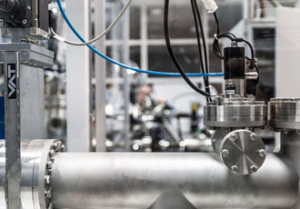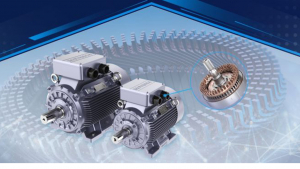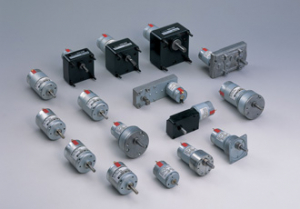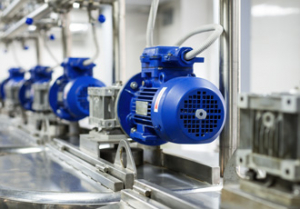Beyond the VSD: Making motors run efficiently

Motor efficiency is often overlooked completely when chemical companies are addressing energy saving and the associated operating expenditure reductions. Here Tony Young, Director of CP Automation, presents his top tips for ensuring that the motors in your plant run as efficiently as possible.
It's a complex cost saving game
Electricity costs are rising as global demand continues to grow, making it imperative for industrial companies to contain electrical usage. Those companies that do invest time and money in energy reduction rarely get much further than fitting Variable Speed Drives (VSDs) or haggling on price per kilowatt hour. However, there are a host of additional measures that can be addressed with very little capital expenditure and they all result in a long term profit as a result of reduced overheads.
The technical challenges that face highly complex chemical plants are great, from the integrations of many different energy sources to maintaining a wide array of energy conversion systems - and let's not forget the need to effectively use by-product energy.
For example, hydrogen is created as a by‐product from manufacturing of chemicals like chlorine. This can be captured and transported for use or used to help power the plants themselves.
Choose the right motor in the first place
One of the first steps should always be to ensure you are fitting the right size of motor for your application in the first instance, whether this is for your pumps, fans or compressors. A good provider of motors, controls or VSDs will always offer an audit first which will help you achieve this.
Design engineers love to over specify ‘for tomorrow’ but for plant and maintenance professionals this just means bigger energy bills. Furthermore, if you plan to add a VSD now or later as a retrofit product, ensure that the motor is VSD rated to start with. Otherwise, any retrofit project will involve replacing the motor as well.
Over specification also raises maintenance bills. I’ve seen countless motors, which are doing an easy job like water pumping, specified at a much higher capacity than is required. Sometimes this is to the point that the motor costs £2,000 but the same job could be done by a motor costing £1,000.
I’ve even known motors to be sent in for an overhaul with problems on parts of the motor that just aren’t being used at all. When the situation is reported to the customer, they are completely unaware of it because it’s a problem with functionality they just didn’t need in the first place!
The analogy is simple; you wouldn’t buy a mini bus for a family of four.
Keep it simple if you can
The less complex the motor the better. From a repair perspective, if you can use a standard energy efficient motor, which you can switch on and have spin at the right speed with no bells or whistles, then use it. It will be cheaper to install, there will be less to go wrong and if something does go wrong the repair will be easier and cheaper.
Choosing a high efficiency motor isn’t always a given in every application; particularly if someone in the buying chain is looking at only the initial capital expenditure of the application and not it’s long-term running costs. However, with the Eco Design Directive in place we should see less end users specifying low efficiency equipment.
Of course, opting for simplicity isn’t always possible. Occasionally there is the need for a timing device or soft start to alter the speed. Equally, it may be that you need an extremely high precision motor for your application.
Timing devices can be hugely underused in the chemical industry and are a very cost effective way of saving energy on non-continuous use applications. Often pumps and ventilators run constantly, even if there are times of day when there is no demand.
You're not just saving energy from not running a motor unnecessarily, but from elongating the life of your systems. For example, the hydraulic pumping efficiency of your cooling systems will experience less degradation over time and remain optimally efficient for longer. Ultimately, it comes down to how much flow capacity is possible for a given amount of energy.
Soft starts are also increasingly common on pump applications and they dramatically reduce the energy used when starting a motor. They are also common on conveyors, where the smooth start prevents objects from falling.
As an alternative to a motor starter resistor or a VSD they can be more profitable, but only if the application is assessed correctly in the first instance and the device is sized appropriately.
Move away from mass production
Inevitably one also has to address the availability of the motor at short notice in the event of a replacement being required. Of course, if spares are kept in stock this may not be necessary and so, ironically, the harder to get hold of motors are sometimes the best option. This isn’t because they are scarce, but rather because they aren’t mass produced and are normally of higher quality. So, while a replacement may not always be easy, a repair often is.
In this context, when choosing someone to do the repair job, you should always go to a specialist. If you go to a company that hasn’t carved out in a niche in, say, servo motors, you will find that they will simply sub-contract your repair to a specialist; increasing your bill in the process.
Another factor to consider is the environment in which the motor is going to be used. Chemical engineering is a harsh environment, from inorganic industrial plants right up to explosives. Go for a more complex drive that can be boxed away. Regulations for your industry may demand this anyway, but the added bonus is that the motor and drive are protected from ingress and damage.
Just implementing a few of these tips will result in a reduced energy expenditure on running motors, and in all likelihood other associated equipment. If you do all of them, you will find it much more effective than just trying to negotiate a lower kilowatt hour price.
Similar articles
More from CP Automation
- Quality crane components meet expert technical advice 4th May 2021
- Surge protection considerations during elevator modernisation 11th March 2021
- Recycling refrigerants in the Netherlands 12th February 2021
- Beyond the VSD: Making motors run efficiently 18th January 2021












Write a comment
No comments